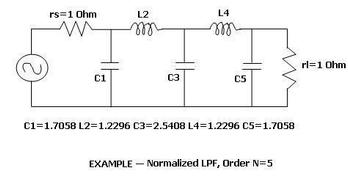
Impedance Matching: Circuits, Methods, and Devices
Explore impedance matching circuits (L networks, Pi networks) and devices (baluns, stubs, quarter-wave transformers) for maximum power transfer in RF systems.
Showing 25 posts (Page 1 of 2)
Advertisement

Explore impedance matching circuits (L networks, Pi networks) and devices (baluns, stubs, quarter-wave transformers) for maximum power transfer in RF systems.

Explore types of baluns and their applications in RF and Microwave.It includes differences between LC, transformer, folded, coaxial and microstrip balun type.Explain 5 examples.

Understand the distinctions between balanced and unbalanced transmission lines, including their structure and grounding characteristics, in RF systems.

Explore the pros and cons of using baluns, devices that connect balanced and unbalanced transmission lines, in various applications.
Learn about characteristic impedance (Z₀), its definition, and equations for calculating it in various transmission lines, including parallel, coaxial, and striplines.
Explore the differences between coaxial cables, waveguides, and microstrip lines in RF and microwave systems, focusing on structure, principles, advantages, and applications.

Explore coaxial to microstrip transitions: edge and vertical mounting, impedance matching, and bandwidth considerations for seamless PCB integration.

Explore coplanar waveguide (CPW) transmission lines, covering structure, functionality, advantages like ease of fabrication, and disadvantages such as surface wave losses.

Explore the key differences between Dielectric Filled Waveguides (DFW) and Substrate Integrated Waveguides (SIW), including construction and mode of operation.
Explanation of electrical length in RF/microwave systems, defining its relationship to physical length, wavelength, and time delay. Includes a glossary of common related terms.
Understand the difference between electrical length and physical length in RF circuits. Learn how to calculate physical length based on electrical length and dielectric properties.

Calculate the characteristic impedance of an embedded microstrip line using this calculator and formula.

Explore the fundamentals of Finline technology, including its benefits such as low dispersion and broad bandwidth, as well as its drawbacks like complex assembly.

Explore the basics of microstrip filter structures, including stub-loaded, stepped impedance, and coupled designs.

Calculate the impedance of a microstrip line using this online calculator. Explore microstrip line configurations and understand effective permittivity.

Explore the different types of microstrip lines—basic, stripline, suspended stripline, slotline, CPW, and finline—their features, advantages, and applications in RF and microwave circuits.

Explore the variations of microstrip lines, including inverted, suspended, and shielded designs, along with their respective advantages and disadvantages.
Explore the key differences between microstrip lines and coplanar waveguides (CPW) for RF circuit design, covering dispersion, losses, coupling, and design flexibility.

Understand the fundamentals of microwave transmission lines, including types, characteristics, and impedance calculations, essential for RF energy transport.
A comparison of planar transmission lines, including microstrip, stripline, CPW, slotline, and finline, highlighting differences in impedance, loss, and mounting.

Learn about reflection and transmission coefficients, key parameters in transmission lines, their definitions, and formulas.
Understand the relationship between reflection coefficient, return loss, and VSWR in transmission lines and impedance matching. Learn how they impact signal integrity.

Explore RF transformer basics and types including core and wire, transmission line, LTCC, and MMIC. Learn about their working principles, construction, functions, and applications.

Explore slotline basics, including antipodal and bilateral slotline types. Learn about advantages, disadvantages and applications of slotlines in RF design.

An overview of the Smith chart including its construction, components, and use in impedance matching.
Advertisement